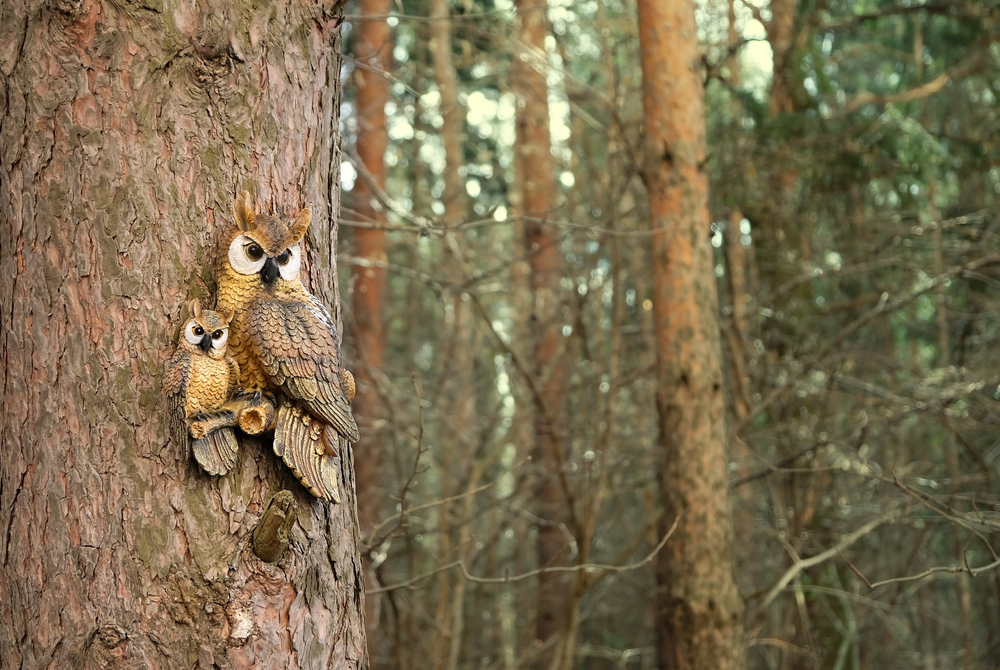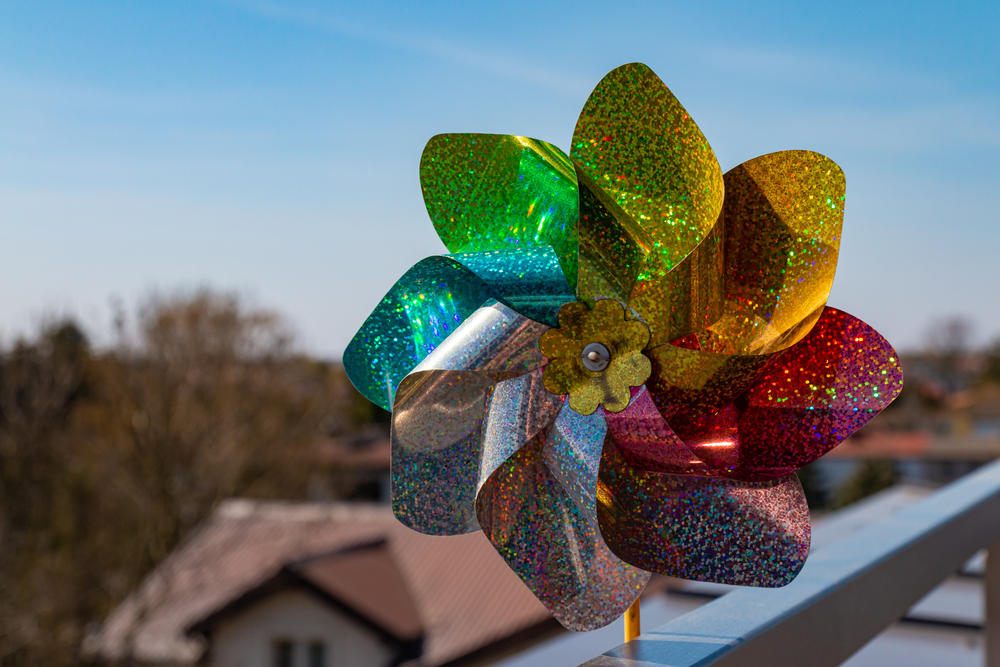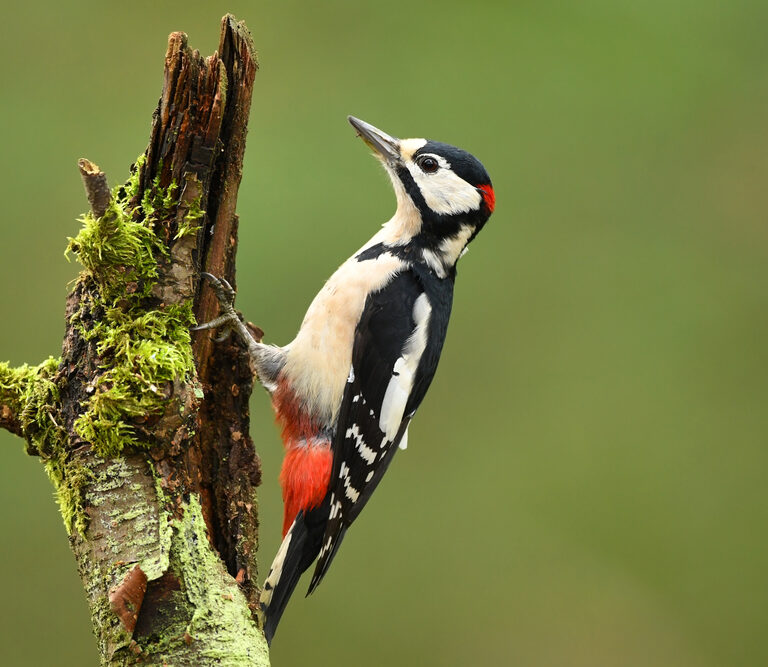As much as we love all our feathered friends, there’s no denying the woodpecker can be a pest.
Right throughout the year—especially during spring—the woodpecker incessantly taps away at any wooden object it can find. And that non-stop drumming makes an awful racket, ruining the tranquility of your home and driving you nuts in the process.
But what can one do about these noisy winged nuisances?
There are several ways you can usher the woodpecker out of your yard and prevent it from coming back again. Today, we’ll cover the most effective cruelty-free options in this handy how-to guide.
Preventing Woodpeckers From Entering Your Yard
When woodpeckers start drumming away at wooden structures or trees, they’re doing one of three things: marking their territory, attracting a mate (common during the breeding season in spring), or searching for tiny insects to eat.
There’s not much we can do to prevent the woodpecker’s territorial or amorous tappings, but we can stop them from searching for food by removing the source.
As omnivorous creatures, the woodpecker diet primarily consists of ants, termites, and bees. Inspect your home and yard closely for signs of insect infestation, including tiny little holes punctured into the wood of your home and trees.
If you find evidence, identify what insect you’re dealing with and purchase the appropriate insecticide—try Demon Max for termites and Bayer for ants and bees. Next, fill in any holes to stop the insects inside from getting out and new ones coming in.
Insecticides can be harmful to pets and humans, so keep everyone safely inside while the poison works its magic. And if you find evidence of termites in or around your home, take action immediately—these home-wrecking pests aren’t something to be trifled with.
Getting Rid of Woodpeckers: 8 Safe and Humane Ideas
Quashing insect infestations won’t always be enough to ward off woodpeckers; these annoying pests have a stubborn habit of sticking around. Try one or more of these eight woodpecker reduction tips to keep the birds at bay.
1. Install a Woodpecker Feeder
It sounds counterproductive—why would you want to feed woodpeckers when the aim is to evict them? But it works. With a woodpecker feeder, you can attract the birds to a far-flung corner of your yard and keep them at a sufficient distance to live your life in peace.
Insert a tempting suet cake into a hanging bird feeder, like this one from Naturesroom, to lure the woodpecker away from your home. The birds tend to forage for food and nest in the same spot, giving the woodpecker little reason to venture closer to the house.
Suet cakes come in a mix of rendered animal fat, fruits, vegetables, seeds, and insects, an enticing combo that proves irresistible to birds.
2. Make a Ruckus
Woodpeckers get spooked and take flight when they hear an unfamiliar sound, and you can use this evolutionary characteristic to your advantage. Whether it’s blasting music, clapping your hands, or making an awkward “woo-ing” sound, a loud unexpected noise will send the woodpecker packing.
You’ll need to manually make a racket upon sighting a woodpecker close to your home, so it’s not an ideal long-term solution—plus, your neighbors might think you’re strange.
If you’re happy to throw money at the problem, electronic bird deterrents can effectively ward off woodpeckers. The BirdXPeller PRO, for example, imitates natural distress and predator sounds to scare away birds over a one-acre area.
3. Purchase a Pretend Predator

The owl is one of the woodpecker’s most feared predators, and setting up a life-like decoy or two is a clever way to keep the pests at bay. The concept works in much the same way as a scarecrow—the birds see a potential threat and make a beeline for safer pastures.
Stacks of different decoy owls are available on the market, some with fancy rotating functions or bright battery-powered eyes. If you’re just after an affordable solution that works, this two-pack from Hausse fits the bill (and they look kind of nice in your yard, too).
Place one decoy in the two most prevalent woodpecker hangouts for optimal effect.
4. Use Woodpecker Netting
If you need to expel woodpeckers from a large area or a garden bed, netting might be your best bet. As netting is relatively soft and unstable, woodpeckers will avoid using the surface to roost.
Aim to position the net at least three inches above the area you’re trying to protect, and leave a little slack—woodpeckers could walk on it when taut.
The downside to netting is it can spoil the look of your yard. This option from NaiteNet has a subtle aesthetic, and its ¾-inch openings are too fine to peck through. There’s some maintenance required: you’ll need to check for holes sporadically and clear away leaves and debris.
5. Set up Some Bird Spikes
Woodpeckers tend to congregate where they can roost—think awnings, eves, fences, and other flat elevated areas. By laying down a long strip of bird spikes on their favorite hangout haunts, you can persuade the feathered pests to make a nuisance somewhere else.
Bird spikes are a simple, low-maintenance, and cost-effective way to prevent woodpeckers from roosting near your home. And although the concept may sound kind of mean, it won’t hurt the bird at all—they simply fly off to another spot.
If you’re worried these fierce metallic skewers might ruin the serene vibe of your tranquil yard, opt for a more inconspicuous transparent model instead—these are hard to spot unless you’re up close.
6. Install Scary Reflective Things

While reflective material isn’t out of the ordinary to us humans, shiny objects are the stuff of nightmares for birds. Both during the day and at night, anything unusually bright will give woodpeckers a big fright.
If you’re on a budget, you can MacGyver up a concoction of aluminum foil, old CDs, and small mirrors. Hang them from a string and let them spin in the wind for a horrifying effect.
Reflective tape works equally well and, as a bonus, makes a startling scrunchy sound in the wind—the combo of shiny surfaces and unexpected noise is terrifying for birds. Another popular bird deterrent is the pinwheel, which works exceptionally well when positioned by a garden bed.
For the ultimate woodpecker repellent, string up a few super-bright mylar balloons (those obnoxious foil and latex ones). The downside, of course, is your yard will permanently resemble a toddler’s birthday party.
7. Fill the Holes in Your House
Woodpeckers love finding dark little crevices to crawl into and nest. And if you’ve got even a narrow crack in your roof or walls, the birds can peck away until it’s wide enough to slip through.
The best solution, then, is to fill in the gaps with putty or mesh. Not only will you dissuade woodpeckers from taking up residence in your home, but you’ll also improve the aesthetics of a worn-out façade.
Minwax makes a great stainable wood filler that dries quickly and won’t shrink or crack. Copper wire mesh is more suitable for covering larger holes—you could also use it to fence off hidden nooks and crannies.
8. Protect Your Trees
If you’re worried about woodpeckers causing undue damage to a particular tree, try wrapping it up like a burlap sack. While woodpecker holes won’t kill a tree, they do allow fungus and parasites to find their way inside and compromise the integrity of the trunk.
The great thing about burlap is the all-natural material has a charming rustic look; thus, it won’t appear unnatural in your yard. Its slippery constitution makes it challenging for the woodpecker to get a good grip on the trunk, which prompts them to take their business elsewhere.
Ridding Yourself of Woodpeckers: Final Thoughts
Woodpeckers are beautiful birds and an essential part of our eco-system—but boy, they make one heck of a commotion.
To free yourself from the sounds of their ceaseless tap-tap-tapping, try one of our eight humane woodpecker removal ideas. By adopting a non-harmful and cruelty-free approach, the birds will simply move onto someone else’s yard, and you’ll be left to live out your days in blissful serenity.
